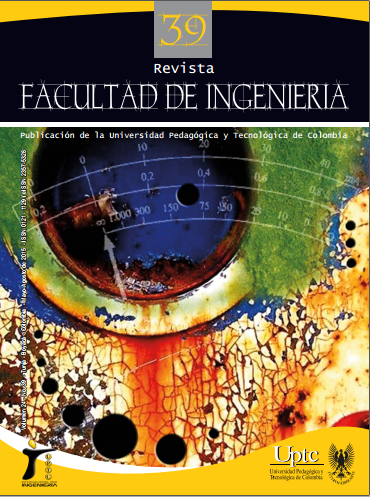Zinc galvanized steel sheets crystal size influence in environments containing chlorides and sulfates

Abstract
This paper studied the influence of the zinc crystal size in the electrochemical behavior of steel sheets hot-dip galvanized. The tests were performed in an electrochemical flat cell in solutions with different concentrations of NaCl and NaSO4. The rate, mechanism of corrosion and the resistive and diffusive characteristics of the sheets were tested by electrochemical techniques like electrochemical impedance spectroscopy (EIS), polarization resistance (Rp) and potentiodynamic polarization curves. The composition and distribution of the products of corrosion (FeO and some zinc compounds) and the surface damage caused by them, were determined using XRD and SEM-EDS. Results showed that the degradation of the oxide layer formed is affected by the presence of chlorides, which penetrate reaching the surface of the base metal, producing localized corrosion.Keywords
galvanized steel, corrosion, chlorides, sulphates, resistance polarization, electrochemical impedance spectroscopy (EIS), potentiodynamic curves
References
- A. P. Yadav, H. Katayama A., K. Noda A., H. Masuda A., A. Nishikata B., T. TSURU. “Effect of Fe–Zn alloy layer on the corrosion resistance of galvanized steel in chloride containing environments”, Corrosion Science 49 (2007), 3716-3731.
- Asociación Latinoamericana de Cinc –LATIZA–.GalvinfoNotes, Proceso de Recubrimiento y Tratamiento de Superficies. 2008.
- ASTM A 653/A 653 M. Especificación para la Plancha de Acero Recubierta de Cinc (Galvanizada).
- H. Asgari, M.R. Toroghinejad, M.A Golozar, “Relationship between (00.2) and (20.1) texture components and corrosion resistance of hot-dip galvanized cinc coatings”. Journal of Materials Processing Technology, 198 (1-3), 54-59, 2008.
- C. A. Arias Maldonado, Estudio del comportamiento de un ambiente corrosivo con cloruros y sulfatos sobre una lámina de acero galvanizado. Bucaramanga, 2011. Trabajo de grado (Ingeniería Metalúrgica y Ciencia de Materiales). Universidad Industrial de Santander. Facultad de Fisicoquímicas.
- D. Sierra F., L. A. Quintero, Estudio del comportamiento de la corrosión de un acero galvanizado, en un ambiente que contiene cloruros y sulfatos mediante técnicas electroquímicas. Bucaramanga, 2012. Trabajo de grado (Ingeniería Metalúrgica y Ciencia de Materiales). Universidad Industrial de Santander. Facultad de Fisicoquímicas.
- H. Asgari, M.R. Toroghinejad, M.A. Golozar. “Effect of coating thickness on modifying the texture and corrosion performance of hot-dip galvanized coatings”. Current Applied Physics, 9(1), 59-66, junio de 2009.
- V. Padilla, P. Ghods, A. Alfantazi. “Corrosion film breakdown of galvanized steel in sulphate–chloride solutions”. Construction and building materials, 66, 447-457, 15 de septiembre de 2014.
- J. G. Castaño, C. A. Botero y S. Peñaranda. “Corrosión atmosférica del cinc en ambientes exteriores e interiores”. Revista de metalurgia, 43(2), 133-145, marzo-abril de 2007.
- G. K. Mandal, D. Mandal, S. K. Das, R. Balasubramaniam and S.P. Mehrotra. “Microstructural study of galvanized coatings formed in pure as well as commercial grade Cinc baths”. Transactions of the Indian Institute of Metals. 62(1), 35-40, February 2009.
- Asociación Latinoamericana de Cinc –LATIZA–. GalvinfoNotes, El rol del aluminio en el galvanizado continuo por inmersión en caliente, Junio de 2007.
- Y. Rico Oviedo, “Estructura y caracterización de los recubrimientos galvanizados por inmersión en caliente sobre aceros”. Universidad Nacional Experimental Politécnica Antonio José de Sucre. Revista Digital de Investigación y Postgrado, 2(5), 368-378, octubre de 2012.
- P. R. Seré, J. D. Culcasi, C.I. Elsner y A.R. Di Sarli, “Factores que afectan a la estructura de los recubrimientos de cinc obtenidos por inmersión”. Revista de Metalurgia, 33, (6), 376-381, 1997.
Downloads
Download data is not yet available.